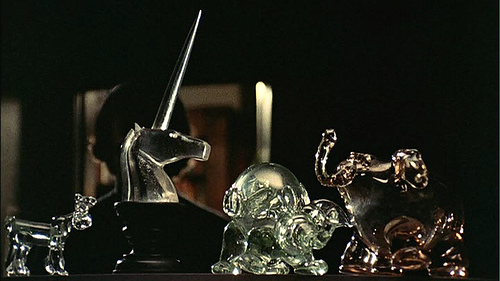stop me
The prank caller in Black Christmas seems to have two very different messages. First, he’s got the whole sex pervert thing going on (with that life-threatening coda in that initial call) then he gets weirder with the baby stuff... and Peter is introduced over the phone. That’s interesting. It occurs to me that the film doesn’t 100% confirm that Peter is not the prank caller. In fact, the change in tone from sexual to something more aggressive would make sense considering his openly negative reaction to Jess’ news about their baby.
Of course, I say that “100%” line because of a) the scene in which Peter is there for one of the calls* and b) the twist ending. The movie isn’t bad—let’s get that out of the way. It’s actually pretty good for a Canadian horror film. But, I think it might work better if Peter were the caller/killer instead of just a red herring. The horror works better if it is closer to home. I don’t mean that it always does. I mean for this story, taking place so much within the one sorority house, it would.
* I actually had forgotten the details thereof. But, watching it again, Jess has reason to think his presence exonerates him but really, his presence implicates him because the phone calls are coming from the other line inside the sorority house.
And I don’t even mean to write about the movie itself today; it just happens. What I mean to write about is the state of Canadian cinema in 1974, why this movie came about when it did in the way it did. Nowell (2010) has an entire chapter dedicated to Black Christmas. But, I’m stuck on this idea that Peter is the killer.

What we actually see of the killer—when he kills Barb—looks different enough that we might not suspect Peter anymore at that point, but Barb’s nightmare about a stranger coming into here room becomes quite ironic if the danger is, in fact, someone she knows.
Additionally, thought Clover (1992) doesn’t seem to mention Black Christmas at all, Peter as killer would fit right in with her notion of the slasher film’s male killer undergoing a psychosexual fury. Essentially, Peter’s masculinity is being challenged. As he complains to Jess, he has been living in the same room for 8 years. He is not in control of his life. And, now Jess has both offered up fatherhood to him and torn it away from him in one fell swoop.
Sidenote: I noticed in this viewing that, while the film is Canadian, it seems to be set in the United States; the lieutenant, for example, has a US flag on his desk. So, the timing with Roe v Wade becomes more relevant. I’ve already argued that the slasher genre emerged, at least in part, in response to the feminist movement. In Black Christmas, whether or not Peter is the killer, he does turn to acts of violence to vent his rage at having his manhood (in the form of being able to control his woman) challenged. It’s no coincidence that this film is female-led for the time in which it was made. But, I will get more into that when I get more into Nowell...
Works CitedClover, C.J. (1992). Men, Women, and Chain Saws: Gender in the Modern Horror Film. Princeton, NJ: Princeton University Press.Nowell, R. (2010). Blood Money: A History of the First Teen Slasher Film Cycle. New York, NY: Continuum.
Comments
Post a Comment